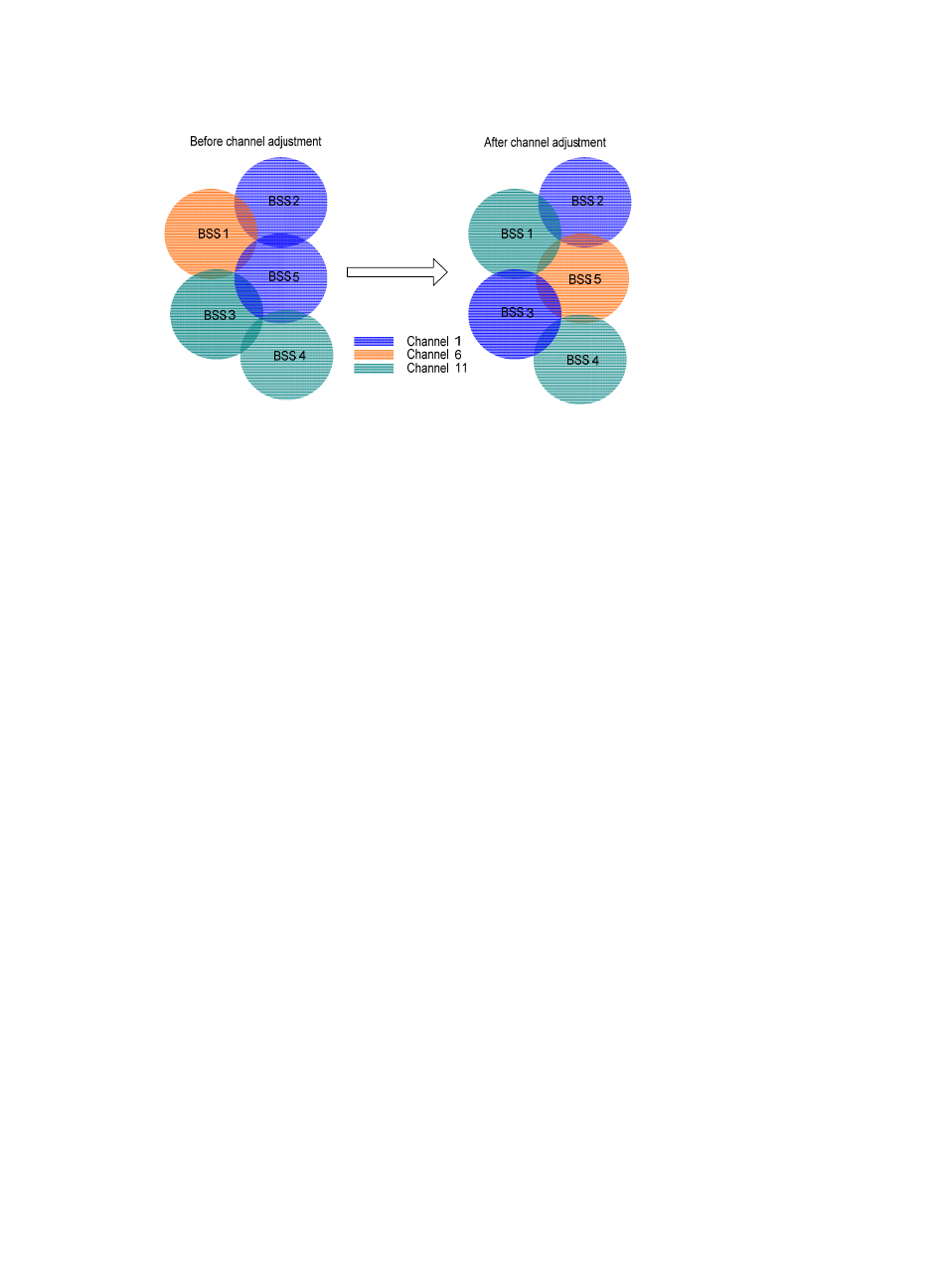Transmit power control – H3C Technologies H3C WX3000E Series Wireless Switches User Manual
Page 494

473
Figure 516 Dynamic channel adjustment
Transmit power control
Traditionally, an AP uses the maximum power to cover an area as large as possible. However, this
method affects the operation of surrounding wireless devices. Transmit power control (TPC) is used to
select a proper transmission power for each AP to satisfy both coverage and usage requirements.
Whether the transmission power of an AP is increased or decreased is determined by these factors: the
maximum number of neighbors (detected neighbors that are managed by the same AC), the neighbor
AP that performs power detection, and the power adjustment threshold. The latter two cannot be
configured on the Web interface.
As shown in
, APs 1, 2, and 3 cover an area. When AP 4 joins, the default maximum neighbor
number 3 (configurable) is reached. Among all the neighbors AP 2, AP 3, and AP 4 of AP 1, the signal
strength of AP 4 is the third, so AP 4 becomes the AP that performs power detection. If AP 4 detects that
the power of AP 1 is –75 dBm, which is lower than the default power adjustment threshold –65 dBm
(configurable), AP 1 will increase its transmission power. If AP 4 detects that the power of AP 1 is –55
dBm, which is higher than the power adjustment threshold –65 dBm, AP 1 will decrease its transmission
power.